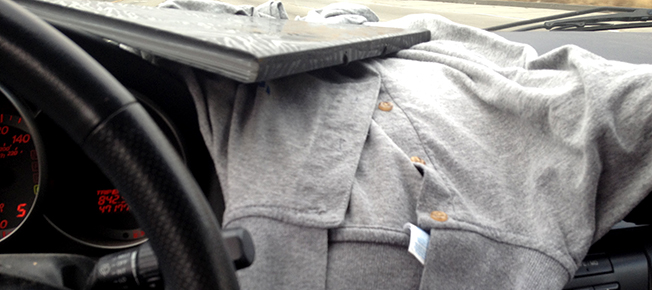In college, the only “tools” I owned were thumbtacks and painters tape. This worked for me until I bought my first piece of Ikea furniture and realized that I might need something more. They might say you can assemble everything using wood screws and elbow grease, but there’s no reason you can’t make it a little easier on yourself. Someday you might even upgrade your home projects to something more advanced, and the following items will become your best friends in all of your endeavors. Because that’s what a tool is—a friend to make every job easier and better, but without the power of speech to criticize your choice of curtain rod or doorknob.
1. Hammer
If you ever want to hang a picture frame or to fix a loose board in your house, you’ll need a hammer. There’s no question. If you’re truly desperate, you can use the sturdy heel of a shoe to bang in a nail. But do yourself a favor on bigger projects (especially ones where other people can see you, e.g. repairing your front porch) and get a hammer. Pro Tip: For removing nails with the opposite end of the hammer—go slow and wiggle the tool just a bit to avoid yanking out a chunk of your wall.
2. Phillips-head Screwdriver
Aka, the fancy one with the cross-shaped head. Since the flathead screwdriver is pretty clear which one it is by its name, I just think ‘the fancy one has the fancy name’ when I’m at the toolbox and can’t remember what I actually want. Apart from switch and outlet plates, most screws you’ll use in your home are meant for a Phillips-head. If you don’t have one and the tightness of the screw isn’t too firm, or doesn’t need to be, you may be able to put some gum or putty on the screw head to fill in the extra slots and use a flathead. Phillips screws are typically used when you might want to use a power drill, because the drill bit is less likely to slip out of the screw and damage your wall/furniture/etc. More on power drills later.
3. Flathead Screwdriver
Flathead screws can’t be ignored. They’re on your light switch plates and outlet covers all around your apartment, so you’ll definitely want to have one in your box if you ever want to paint your apartment. Or if you ever decide you want one of these.
4. Flashlight
The last thing you want when you have a leak under your sink or when the power goes out is to be without a flashlight. Okay, when the power goes out, candles are more romantic. But laying on your back, under your sink, looking for a leak surrounded by candles inside your wooden kitchen cabinet? Not the best idea. I keep one in my bedroom and in my car.
5. Tape Measure
Yes, I know you still have a your ruler from high school math class. But guess what? Your apartment (hopefully) is more than 12 inches across. I spent years making hash marks along my wall when measuring where to hang things, and let me tell you, it’s about a million times faster to just open the tape measure. Also, they’re bendy, so you can take your body measurements–my (not) favorite use.
6. Level
Actually, maybe a level isn’t the best addition on this list, because once you don’t have to climb up and down your ladder over and over checking that your new poster is level (how to use a level), you might have to pay for a gym membership to supplement your Stairmaster workout. Apologies.
7. Ruler
I know I just said that you want a tape measure. And you do. But the main benefit of having a ruler in your arsenal is that they have flat, straight edges. When you have two frames you need to hang 10 inches apart, you can hold up your level (see above) in line with the ruler and get the hanging of your frames right the first time.
8. Power Drill
My personal favorite tool. After the first time I tried to screw a shelf into a stud in the wall and felt like my arm was going to fall off, I got a power drill. It did the same job in two seconds AND didn’t make a mess out of the wall like I did. Nothing will make your life easier than a power drill. Home Depot has a handy guide in what to look for in a drill. The standard homeowner/renter would do well with a 12 Volt drill (18 Volt if your projects are a bit more heavy duty). You don’t need to get the most expensive option, but don’t get the cheapest either. You can be a bit stingier with the drill bits you get to go with your new toy.
Runner-ups:
Ladder/Step Stool – I include this as a runner up only because not everyone needs one for half of their home projects like I do, and it’s only sort of a tool. I’m short, so hanging curtains isn’t exactly an option without at least a small step ladder. Most people can just pull over a kitchen chair and use that, but I have to have more height. Same goes for replacing light bulbs. My roommate and I have a small ladder that fits into the corner of a closet, and it’s one of the best investments we’ve ever made in terms of maintaining sanity.
Duct tape – I’m a big believer in having the right tool for a job. But sometimes that right tool is the wherewithal to admit you don’t know what you’re doing and throw some duct tape on it. It usually works.

Photo by Meaghan Morrison




